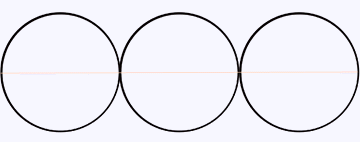
Guilloche is the twisted rope design often used in borders and to frame elements of Roman mosaics. You can draw guilloche freehand, but I decided on a more geometric approach. The design is built up from circles, with smaller circles inside them

Guilloche is the twisted rope design often used in borders and to frame elements of Roman mosaics. You can draw guilloche freehand, but I decided on a more geometric approach. The design is built up from circles, with smaller circles inside them
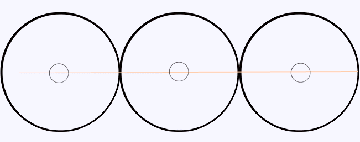
The circles are centred on the mid-line of the pattern.
Because the circles are touching, the repeat of the pattern is the same as its height. This is authentic, but Roman mosaics also sometimes have more compact guilloche work - you can get this effect by overlapping the large circles.
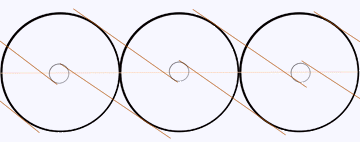
Draw tangents from near the the top of a large circle to near the bottom of the small circle to its right. Draw similar parallel lines from the top of a small circle to the bottom of the large circle on its right. (Note that every line you draw here crosses the mid-line of the design.)
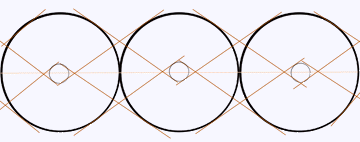
Build up the matching lines sloping down to the left.
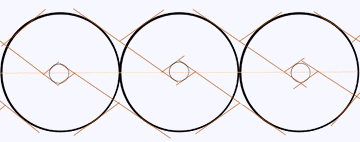
Start to erase the unwanted parts of the lines that are sloping down to the left.
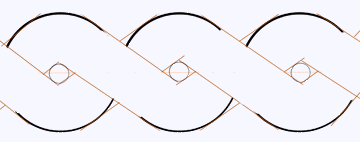
Erase the "hidden" parts of the original circles to develop the "under and over" effect.
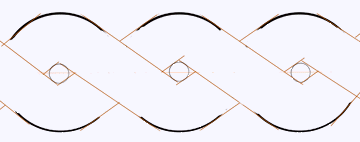
Erase the last bits of the unwanted lines and blend the straight lines to the curves.